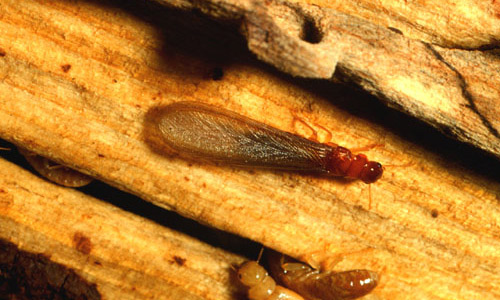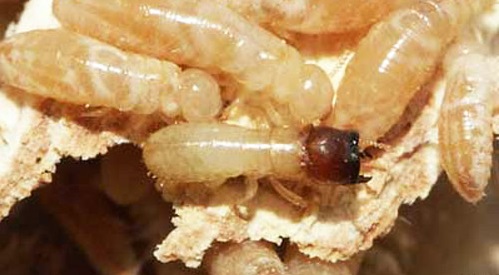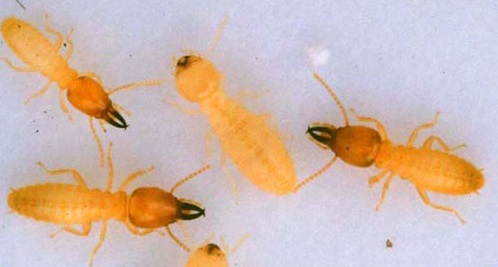When you think about termites, the first image that comes into your mind is a colony of insects that live in large mounds of cemented earth. Even though that’s a good summary of what termites are, there is actually more to these creatures. There are actually different types of termites? And these types have different characteristics that can influence how they infest your home. In this article, we explain the different types of termites that can infest your home.
Why you should know the different types of termites
Termite infestations are damaging to your health and your home. If you have a termite infestation, you should understand your enemy, so you are more equipped in your fight against them. The best pest control method may also differ between different termite types.
- Different types of termites may require different pest control methods. Different types of termites have different characteristics and habits. These differences may be enough to render some pest control methods ineffective. It’s important to know the type of termite you are dealing with, so you can search what pest control method is the most effective for the specific type in your home.
- Termites can be harmful to humans. You should act fast if you have termites in your home. Even though termites are not known to spread diseases, they do bite and cause allergies. The insecticides used to kill termites, also known as termiticides, can also be health risks. Termiticide exposure can lead to diarrhea, difficulty in breathing, nausea, and skin irritation.
- Termites are some of the most structurally damaging pests. Termite-infested structures can also collapse, especially when foundations are compromised. It doesn’t help that foundations are some of the most favorite nesting spots of termites too. Even if structures don’t end up collapsing, the termites can still cause significant damage. In the United States alone, termites cause billions in structural damage a year.
Different types of termites
There are many different kinds of species of termites, but they can be grouped into four general types – dampwood termites, drywood termites, Formosan termites, and subterranean termites.
1. Dampwood termites

As the name suggests, dampwood termites are termites that prefer living off of wood that has a high moisture content. Like other termites, they can cause structural damage, but they are not as notorious as the others, like the drywood termites. They are more likely to infest rotting stumps and wet logs than the moistureless wood of your home. With that said, you still wouldn’t want to have dampwood termites on your property. You should be particularly careful of these termites if you live in a moist environment, like the Pacific coast of North America.
Dampwood termites are larger compared to other termites you typically find in North America. Their distinguishing characteristics are their dark brown leathery wings and hexagonal fecal pellets.
2. Drywood termites

Drywood termites are termites that live exclusively within the nooks and crannies of wood. They don’t need to bury into the soil to nest. This is one of the primary reasons why drywood termites are some of the most common ones in human habitats. They can live in the wooden structures on buildings and homes and wooden furniture. They can also spread very quickly because of the transportation of timber.
The only good thing about drywood termites is that their colonies are usually smaller compared to other termites, like the Subterranean termites. This means that drywood termites can cause damage to your home at a slower pace.
3. Formosan termites

Formosan termites are actually Subterranean termites. But they deserve their own entry in this list because they have truly distinguished themselves. Formosan termites are some of the most aggressive and destructive termites you can have at home. Their colonies can have millions of voracious individuals. When it comes to Formosan termites, prevention is almost always better than cure. They are particularly hard to eliminate because of their appetite and colony size. It doesn’t help that they have very intricate colonies with mud tubes.
You can find Formosan termites in areas with mild climates, such as the southern portion of the United States and Hawaii. They are originally from China, but they have spread all over the world because of human transport.
4. Subterranean termites

Subterranean termites are termites that live in the soil. But don’t let this characteristic fool you. It’s actually one of their strengths. Subterranean termites build some of the most intricate insect nests in the world, making them very hard to eliminate. They connect their nests and food sources with mud tubes. These mud tubes serve as protective bridges, so they don’t get exposed when collecting food. The mud tubes made by subterranean termites are so distinguishable that they are actually some of the strongest signs of a termite infestation.
You can find Subterranean termites all over the United States except Alaska. In fact, they are so prevalent that they are considered to be the most destructive termite group in the country.
What to do when you see termites on your property
It can be difficult to diagnose a termite infestation. The size of termites doesn’t exactly make them easy to see. Most of the time, people only know they are suffering from a termite infestation because of the damage they see on their wooden structures and furniture.
When you do see termites, you should be proactive and work immediately to get rid of them. Here are the things you can do.
- Inform your landlord immediately. If you are renting the property, immediately report to your landlord that the property is suffering from a termite infestation. They are required to make the property they are renting out to be livable.
- Call a pest control professional. Termites are not your typical pests. You can’t just kill them by leaving poison all over your home or setting up traps. You have to bring the fight directly to them, and that could be difficult because of the intricacy of termite colonies. It’s best to leave it to knowledgeable and professional individuals who have been dealing with such pests for a long time.
- Be wary of DIY pest control methods. DIY pest control ingredients like boric acid, soapy water, and vinegar do work. But their effectiveness can only go so far. Mature termite infestations with deep and intricate colonies may not be affected. There is also the issue of safety. Boric acid, for instance, can be toxic to humans too. This is particularly dangerous if you have unsupervised children and pets in your household.
Knowing the different types of termites
Termites are harmful to you and your home. If you find out you have a termite infestation on your property, you better act fast. Inform your landlord immediately and get the help of pest control professionals. The professionals will know what type of termite you have at home and what the best pest control method for it is.
